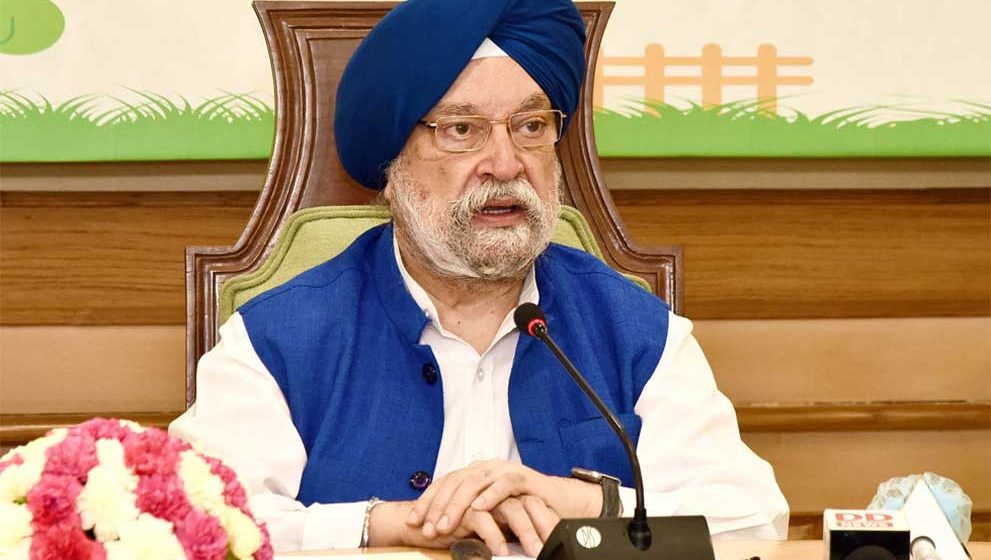
With Indian cities emerging as the key drivers of economic growth, attention also needs to be paid to developing a robust public transportation system in them, observes Hardeep Singh Puri, Union Minister for Housing and Urban Affairs. Puri made these observations at a panel discussion moderated by Pratap Padode, Editor-in-Chief, CONSTRUCTION WORLD, and Aashish Chandorkar, Columnist, Swarajya, during the ‘InfraNirbhar Webinar Series’.
Highlights of the discussion…
From Metro Lite and Metro Neo, which technology will apply to which city? Do you see any execution risks, for example, issues between the Central and the State Governments?
If it were left entirely to state governments, they would all demand regular metros. The problem is that the metro system is capital-intensive and one needs to raise finances. Most of these projects are supported by financing from multilateral financial institutions. For example, we had to take a loan from the Japan Investment Cooperation Agency (JICA) for the Delhi Metro. Additionally, these capital-intensive projects need to be economically viable, because you have to pay the loan back within a stipulated period. While we politicians are very ambitious and want the best in infrastructure, we often shy away from the need to ensure that such projects become economically viable. For cities where the peak hour peak direction trips (PHPDT) is 15,000, Metro Lite is suitable; and for cities with up to 8,000 PHPDT, Metro Neo is suitable. In the case of Metro Lite, the cost per km comes to about Rs 1.2-1.4 billion per km; for Metro Neo, it is Rs 0.6-0.8 billion per km. However, while developing these projects, one needs to anticipate future growth and plan accordingly.
As for the issues between the centre and states, I wouldn’t say there are any major disputes. After I became a minister in September 2017, I’m only aware of one case where we had some tension with the state government, which I was able to resolve.
According to the Metro Rail Policy, 2017, we were supposed to have a comprehensive mobility plan and statutory body for the Unified Metropolitan Transport Authority (UMTA) to ensure an integrated approach in planning and management for seamless integration of the entire urban transport system. What is your view on this?
Let me give you the facts. Tamil Nadu, Kerala, Madhya Pradesh and Karnataka already have a UMTA and we are insisting on this for every project we now appraise. But I think the overall approach should be to use encouragement not “unless you do this”. Then, it becomes like the chicken and egg dilemma. So, I think it’s a good start and we are encouraging other states to have UMTA as well.
Is there a plan to extend any production or launch any other specific programmes to further incentivise Make in India?
Well, the overall philosophy right now is Atmanirbhar. And I am very happy to tell you that Indian-made metro coaches are being sold in Australia and Canada. We currently have 760 km of operational metro and in a few years, we will have another 1,046 km. But that’s not the real story.
The real story is that you are moving into a situation where, by 2030, you will have 600 million people living in our urban centres and all of them will require transport. So, we will have to develop 600-700 km of metro rail every year. These additional metro lines will be the story and will materialise through domestic manufacturing. They will create opportunities for people to manufacture in India. To promote this further, we have standardised the minimum local content required for rolling stock at 60 per cent, telecommunications 50 per cent, signalling 50 per cent, elevated civil works 90 per cent, structural works 80 per cent and electrical-mechanical works 60 per cent. Nearly 64 items have been identified to be sourced on Indian soil. There is a major process of indigenisation that we are encouraging. And the production-linked incentive (PLI) scheme will further incentivise the Make in India initiative.



Leave a Reply
You must be logged in to post a comment.